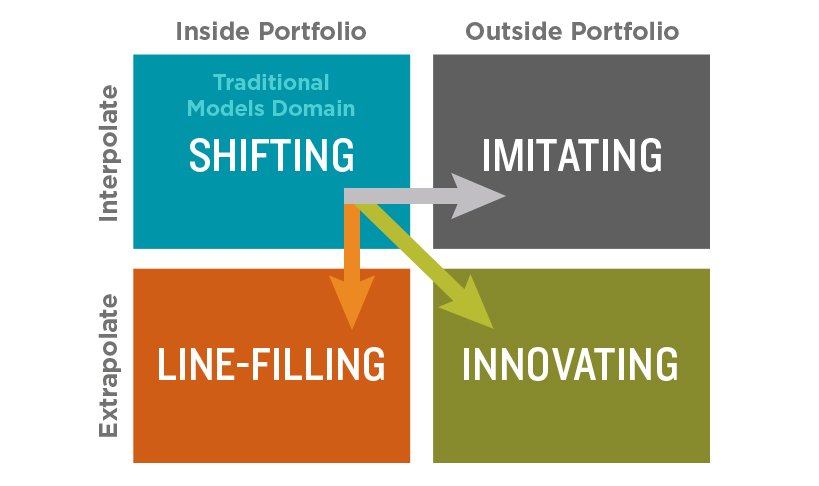
While developing several hypotheses for a series of scenario-planning exercises, I noted that the Middlegame “wide-angle view”across the entire category offers an enormous opportunity to expand beyond the simulation capability of traditional marketing response models. I was surprised that I hadn’t shared this before with this client. We immediately started talking about whole new ways to leverage the CIA® platform and quickly address issues that the client thought could only be done by building, fielding and analysing a survey.
In an earlier blog, we introduced Bruce Hardie, Professor of Marketing at London Business School, as one of the Middlegame heroes. The description I gave was entirely lifted from his 1994 PhD dissertation from the Wharton School at the University of Pennsylvania entitled “The Market Response to Product Line Extensions.” I gave credit where credit is due, but I think it is worthwhile to quickly share it with everyone who follows the blog.
The idea was to present new product options as a quadrant. On the first axis, Bruce asked if the idea or concept for the new product was something that already existed or didn’t exist in the marketplace. Well over 80 percent of new products are really the transfer of flavors, sizes, package types, etc. from one brand to another brand. Basically, you were either interpolating within the category or extrapolating. At the same time, this interpolation or extrapolation was related to an offering either inside your existing portfolio or outside. Those four groupings created an easy way to nicely organize any new product with true innovation only occurring at the intersection of extrapolation and outside the portfolio.

SHIFTING: moving the level of distribution or pricing of existing products up or down to present a redefined offering
LINE-FILLING: taking the product characteristics, e.g. a larger size, from one brand in your portfolio and applying it to another brand subsequently creating a new product
IMITATING: the same as line-filling, but the product characteristic is currently offered by a competitor
INNOVATING: bringing a completely new characteristic or attribute level to the category
Bruce was obviously focused on new products, like a lot of what we do with the CIA® platform, but his matrix easily applies across all the marketing 4Ps: product, price, promotion and place. For example, what if we have never used coupons to support our brand, but a competitor has? The Middlegame “wide-angle view”offers an immediate and comprehensive read on the potential impact of investing in couponing with the obvious focus on the incrementality versus transferred demand of such a strategic move. Some clients move on to test those simulations that offer the most opportunity while other clients immediately integrate these concepts into their strategic planning.
The issue for traditional shopper response analytics is that these techniques struggle to offer simulation that is beyond “shifting”or simply adjusting the things that you already do. There are way more opportunities than that: To steal from operations research, the “feasible bounds”of scenarios becomes the entire observed competitive set as opposed to the product or brand history. We can simulate imitative pricing or promotional and merchandising support as well as new product. If given access to additional survey-based research, e.g. a conjoint study, we can quickly integrate those results with our CIA® models to evaluate the truly innovative.
Because I thought this was a really important element of our offering to clients, we used to use the tagline “using marketing analytics to do better things as opposed to do things better” to try to convey that marketers–and therefore the tools for marketing analytics–needed to expand beyond addressing the opportunity to shift current resources. I might start thinking about how to weave that back into our various marketing collateral since what Bruce put together really is quite brilliant and very easy to communicate.
Middlegame is the only ROMI consultancy of its kind that offers a holistic view of the implications of resource allocation and investment in the marketplace. Our approach to scenario-planning differs from other marketing analytics providers by addressing the anticipated outcome for every SKU (your portfolio and your competitors’) in every channel. Similar to the pieces in chess, each stakeholder can now evaluate the trade-offs of potential choices and collectively apply them to create win-win results.
